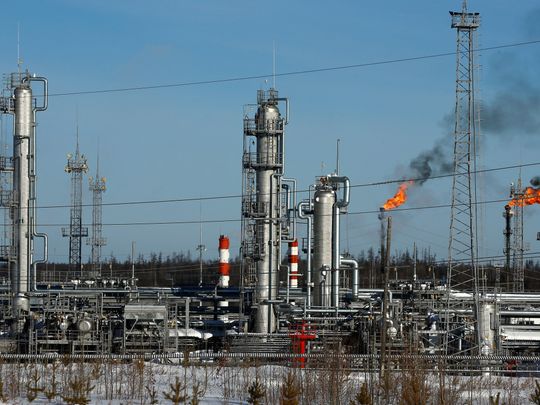
Volatility in oil prices has overshadowed other businesses after the Biden administration interfered directly to influence price cuts rather than anything borne out of practical decisions. Overall, this hung latent uncertainty spurred by the Omicron.
These developments initially led oil prices to slump to $68 down from $80 per barrel before they rose again at the beginning of this week to get past $74. Let it be said again – the US move to sell its strategic oil reserves to lower prices will not work and instead will have reverse consequences. The reserves are mainly intended to address any short-term global shortages, as confirmed last week by the energy adviser to former US president George W. Bush, who said “the use of strategic reserve is a process that involves a great deal of risks - the solution lies with the President talking to the Saudis to solve the issue of price hikes”.
The Biden administration seems to have listened to this advice after White House spokeswoman Jen Psaki said: “We appreciate the close coordination with our partners in Saudi Arabia, the UAE and OPEC+ producers to help address price pressures.”
Dipping into reserves
In fact, this approach is better than any decision to release strategic oil reserves. Apart from the US release of 50 million barrels, China, Washington’s archrival, joined the US in its approach to release some reserves of its own. China and Britain announced that they will tap their strategic petroleum reserves, while Japan released 4.2 million barrels and India another 5 million barrels.
The question is: Why did the White House spokeswoman specifically mention Saudi Arabia and the UAE? The reason is that they are key in the control of production levels, thanks to their excess available capacity, while the rest of OPEC have only a limited amount. This clearly means that the production levels and prices will be determined by Riyadh and Abu Dhabi.
What matters is the direction the oil prices will take. According to Jen Psaki’s statement, it seems that the US administration has reached an understanding with OPEC+, especially with Saudi Arabia and the UAE. This prompted the OPEC+ group to agree to go ahead with its existing policy of the monthly oil output increase of 400,000 barrels per day, after reports of its intention to cancel this increase.
Will the deal hold?
This means that there will be a specific oil price ceiling in the coming period, possibly an average of $70-75, which may be suitable for producers and consumers alike. But market factors and speculators may have another say, as oil demand is expected to rise significantly, especially if the new virus variant has been contained. Demand levels may exceed OPEC+’s excess production capacity of 4-5 million barrels, which may push prices to levels higher than those agreed upon.
Just as consuming countries have put aside all their contradictions and differences and rallied to lower prices, OPEC members must forget their differences to defend a fair price for a barrel of oil. Reaching an understanding is generally a good outcome, but the Biden administration faces many economic difficulties, particularly high gasoline prices and inflation rates that have pushed the President’s approval rate to new lows and threatened the chances of Democratic candidates in the midterm elections in November 2022.
Therefore, the uncertain state of the US economy may push the administration to step back from these understandings to influence prices, which requires careful monitoring of supply and demand levels in the global oil market. Any price below $70 per barrel would be considered unfair and inappropriate to OPEC+’s economic chances.












